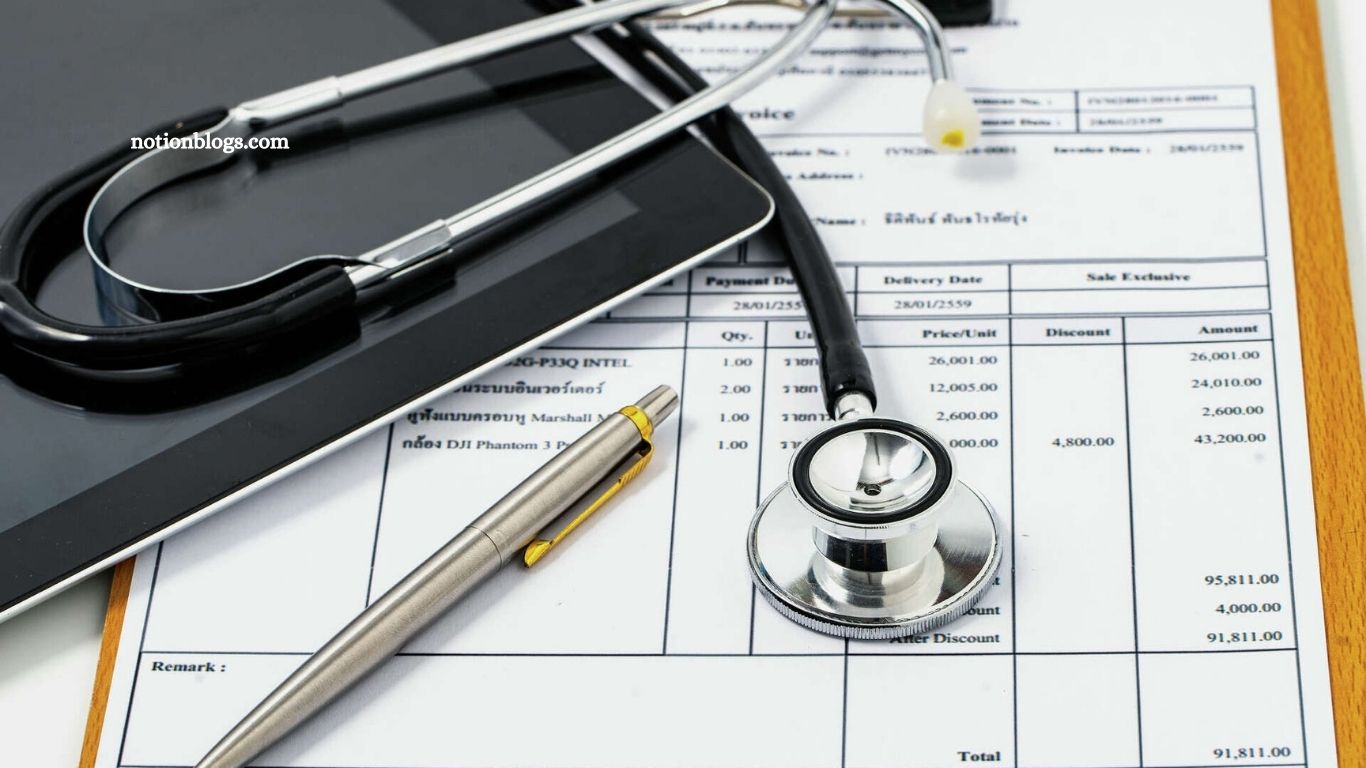Regular medical checkups are a cornerstone of preventive healthcare. By assessing your personal risk factors, screening for cancer and other serious conditions, and evaluating lifestyle habits such as diet, exercise, and stress management, routine visits to your doctor can play a critical role in maintaining your overall well-being.
These appointments offer an opportunity to catch potential health issues early—often before symptoms appear—allowing for more effective and less invasive treatment. In this article, we’ll explore the importance of regular checkups, how frequently they should be scheduled based on age and health status, how to prepare for your visit, and what to expect in terms of insurance coverage. Staying informed is one of the most effective ways to stay healthy and take charge of your long-term health.
Read More: Neanderthals’ Fast Expansion Across Asia: New Insights Reveal the How
How Often Should Adults Have a Checkup?
The ideal frequency of routine checkups varies depending on your age, overall health, and individual risk factors. While recommendations may differ slightly among healthcare professionals, general guidelines suggest:
- Every 1 to 3 years for adults under 45 who are in good health
- Annually for adults aged 45 and older
If you have a chronic condition—such as diabetes, heart disease, or chronic obstructive pulmonary disease (COPD)—more frequent visits are often necessary, regardless of age.
Ultimately, your doctor will tailor the timing of your checkups to your specific needs, taking into account your medical history, lifestyle, test results, and any new or emerging health concerns. Regular evaluations help ensure timely intervention and optimal long-term care.
What Are the Benefits of Regular Checkups?
Regular checkups with your healthcare provider play a vital role in maintaining your overall well-being. These visits offer several important benefits, including:
- Gaining personalized advice on nutrition, exercise, mental health, and lifestyle habits to support a longer, healthier life
- Early detection of serious health issues, such as cancer, heart disease, or diabetes—often before symptoms arise
- Prompt treatment, which improves the chances of successful outcomes and reduces long-term health risks
- Ongoing management of chronic conditions, helping to prevent complications and slow disease progression
- Staying current with essential screenings and vaccinations, ensuring timely prevention and protection
- Lower healthcare costs by avoiding expensive emergency care or advanced treatment for conditions caught too late
- Building a strong relationship with your primary care physician, fostering better communication and trust
What Should Be Included in a Checkup?
An annual checkup is a comprehensive review of your health designed to detect potential problems early and keep you on track with preventive care. During the visit, your healthcare provider will evaluate your current health status, update your medical records, and recommend appropriate screenings based on your age, lifestyle, and risk factors.
A typical adult checkup includes a review and update of:
- Personal medical history
- Family medical history, especially if there are new developments
- Current medications and known allergies
- Vaccination records and prior screening tests
Common screenings for both men and women may include:
- Lung cancer screening with low-dose CT scans (for adults ages 55–80 who currently smoke or have recently quit)
- Blood pressure monitoring
- Body mass index (BMI) assessment for obesity
- Tobacco, alcohol, and substance use evaluation
- Depression screening
- HIV testing (for adults ages 15–65 or those at higher risk)
- Hepatitis C screening (for individuals born between 1945 and 1965)
- Type 2 diabetes screening (for those with risk factors or family history)
- Colorectal cancer screening (starting at age 50)
Additional Screening Tests for Women and Men
In addition to the standard evaluations included in an annual checkup, men and women have unique health risks that may require specific screenings based on age, risk factors, and personal health history.
For Women:
- Intimate partner violence screening for women of childbearing age
- Mammograms for breast cancer, typically recommended every 1–2 years between ages 50 and 74
- Pap smears for cervical cancer, usually every 3 years for women ages 21 to 65
- High cholesterol screening, beginning at age 45
- Osteoporosis screening with bone density testing, starting at age 65
For Men:
- Abdominal aortic aneurysm screening for men ages 65 to 75 who have a history of smoking
- Prostate cancer screening (e.g., PSA test) is not routinely recommended but may be considered after discussing risks and benefits with your doctor, typically starting around age 50
- High cholesterol screening, beginning at age 35
These gender-specific screenings help detect serious conditions early, often before symptoms appear, allowing for more effective management and treatment. Your healthcare provider will tailor recommendations based on your individual health profile.
What to Expect During a Physical Exam
A routine physical exam is a key component of preventive healthcare. It allows your doctor to assess your current health, identify potential concerns, and guide you toward healthy lifestyle habits. Here’s what you can typically expect during the appointment:
Initial Assessment
After you’re called back to the exam room, a nurse or medical assistant will:
- Check your vital signs, including blood pressure, heart rate, temperature, and respiratory rate
- Confirm and update your medical history, medications, allergies, and lifestyle habits (such as diet, exercise, tobacco or alcohol use)
- Ask about any recent health changes, surgeries, or symptoms
- Review your need for medication refills
- Perform screenings for depression, alcohol use, or other behavioral health concerns
The Exam Process
Once the nurse leaves, you’ll be asked to undress, wear a gown, and sit on the exam table. A privacy sheet may be provided. Your doctor will knock before entering to ensure you’re ready.
Your doctor will:
- Review your updated health information and ask follow-up questions
- Offer lifestyle counseling and discuss any findings from initial screenings
- Perform a comprehensive physical exam, which typically includes:
- Visual inspection for abnormal growths, rashes, or marks
- Palpation (gentle pressing) to examine your abdomen and other areas for tenderness or irregularities
- Auscultation using a stethoscope to listen to your heart, lungs, and abdomen
- Percussion, a tapping technique used to detect fluid or abnormal masses
For women between ages 21 and 65, a Pap smear may be performed as part of cervical cancer screening. Additional exams or tests may be done depending on your age, medical history, and risk factors.
After the Exam
Your doctor will:
- Discuss their findings with you
- Recommend any follow-up tests, screenings, or treatments
- Review any new or existing medications
Afterward, you’ll get dressed, and the nurse may provide prescriptions, lab orders, or health instructions before you leave. This is also a great time to ask questions about your health and preventive care.
How to Prepare for Your Checkup
Preparing for your physical exam can help ensure a smooth, efficient, and productive visit. Here are some practical steps you can take before your appointment:
- Gather medical records: If you’re seeing a new doctor, bring your insurance card, previous medical records, and vaccination history. If your immunization records are incomplete, your doctor may recommend an antibody titer test to check for immunity.
- Update your health history: Make a list of any recent changes in your medical or surgical history, including hospitalizations, procedures, or new diagnoses since your last visit.
- Review your medications: Bring an up-to-date list of all medications you’re taking, including prescription drugs, over-the-counter medicines, supplements, and herbal remedies. Some offices may ask you to bring the original bottles for reference.
- Note new symptoms: Write down any new or unusual symptoms, allergies, or side effects you’ve experienced since your last checkup.
- Prepare legal documents: If you’ve made changes to your living will, advance directive, or healthcare proxy, bring a copy to share with your doctor.
- Request accommodations: Notify the office in advance if you require special assistance—such as a translator, mobility aid, or wheelchair access—so your needs can be accommodated.
Being organized and proactive helps your healthcare provider better assess your health and provide personalized care.
Talking with Your Doctor: How to Communicate Effectively
Clear, honest communication with your doctor is essential to receiving the best possible care. When you actively participate in your healthcare, your provider can better understand your concerns, guide your decisions, and create a treatment plan that fits your needs. Here are some tips to help you communicate more effectively during your checkup:
- Prepare in advance: Write down your questions, concerns, and symptoms ahead of time, prioritizing the most important topics first.
- Speak up if you’re unsure: If you don’t understand something your doctor says, ask for clarification in simpler terms.
- Follow up on unclear answers: Don’t hesitate to ask for more information if something feels incomplete or vague.
- Repeat key points: Restating what your doctor says can help confirm your understanding and ensure nothing is missed.
- Take notes: Jot down instructions, medical terms, or follow-up plans during the visit so you can review them later.
- Ask about communication preferences: Find out how your doctor prefers to handle post-visit questions—through a patient portal, email, or phone.
- Address communication barriers: If you have trouble hearing or understanding, let your doctor know immediately so adjustments can be made.
- Express your perspective: If you disagree with a recommendation or have concerns, speak up—your input matters.
- Be honest: Share sensitive or uncomfortable issues, such as mental health struggles, substance use, or sexual health. Your doctor is there to help, not judge.
Remember, your doctor is your partner in health. The more transparent and engaged you are, the better they can support your well-being.
Are Checkups Covered by Insurance and Medicare?
Under the Affordable Care Act, both Medicare and most private insurance plans are required to cover a wide range of preventive services—including screenings, immunizations, and annual wellness visits—without copays or deductibles. However, there are important distinctions to keep in mind.
Medicare Coverage
Medicare refers to routine preventive care as a “Wellness Visit.” These yearly visits focus on developing or updating a personalized prevention plan based on your health history and risk factors. They include basic assessments but do not cover full physical exams.
Medicare fully covers many preventive services such as:
- Vaccinations
- Most screening tests (e.g., mammograms, colonoscopies)
- Birth control counseling
However, if your doctor addresses new or existing health issues—like back pain or a recent illness—during the same visit, that portion may be billed separately as a diagnostic or regular office visit, which could result in a copay or deductible.
Private Insurance Coverage
Most insurance plans also cover preventive services at no cost, as long as:
- The provider is in-network
- The services are classified as preventive (not diagnostic or treatment-related)
If your visit includes additional services, such as lab tests, imaging, or treatment for an ongoing condition, it may not be fully covered.
What If You Don’t Have a Primary Care Physician?
Having a primary care provider (PCP) is key to continuity of care, staying on track with checkups and screenings, and building a long-term, trusted healthcare relationship.
If You Have Insurance:
- Ask for referrals from family or friends.
- Use your insurer’s website to search for in-network doctors in your area.
- Look for someone whose approach to healthcare matches your preferences.
- Consider location, office hours, and communication style when choosing a doctor.
If You Don’t Have Insurance:
There are still options for affordable or free care:
- Community clinics or free clinics may offer low-cost or no-cost services.
- Federally Qualified Health Centers (FQHCs) provide accessible, sliding-scale primary care.
- Hill-Burton facilities and charity care programs offer reduced-cost services in certain areas.
- Search for coverage through the healthcare marketplace at HealthCare.gov. Subsidized plans may be available based on your income.
Takeaway
Routine checkups are a powerful tool in managing your health. They help identify risks early, keep chronic conditions under control, and give you a chance to stay informed and engaged in your care.
- Adults under 45 in good health may only need a checkup every 1–3 years.
- Adults over 45, or those with risk factors or chronic conditions, should have annual checkups or see their doctor more frequently.
Whether you’re insured or not, options exist to access regular preventive care—so you can take charge of your health with confidence.
Frequently Asked Questions
How often should a healthy adult see a doctor?
If you’re under 45 and in good health, most experts recommend a checkup every 1 to 3 years. Once you turn 45, annual checkups are generally advised to monitor age-related risks more closely.
Do I need a checkup if I feel fine?
Yes. Even if you feel healthy, regular checkups help detect silent conditions—like high blood pressure or early-stage cancers—before symptoms appear. Preventive care can save lives.
Should people with chronic conditions see their doctor more often?
Absolutely. If you have a chronic condition like diabetes, heart disease, asthma, or COPD, your doctor will likely recommend more frequent visits—often every 3 to 6 months or as needed.
Are checkups covered by insurance or Medicare?
Yes—preventive checkups are usually covered at no cost under most health insurance plans and Medicare, as long as only preventive services are performed. If other medical issues are addressed, copays or deductibles may apply.
Can I combine a checkup with a visit for a new symptom or concern?
You can, but keep in mind that this may change how the visit is billed. If your doctor treats a new condition during a preventive checkup, you may be responsible for part of the cost.
What happens if I skip my annual checkup?
Skipping regular checkups can delay the diagnosis of conditions like high cholesterol, diabetes, or cancer. Routine visits are essential to staying on top of your health—even when you feel fine.
What if I don’t have a primary care doctor?
You can find a doctor through your insurance network, local health clinics, or the healthcare marketplace. If you’re uninsured, look into community health centers, free clinics, or sliding-scale providers for affordable care.
Conclusion
Scheduling regular checkups with your doctor is one of the most effective ways to take control of your health. These visits allow you to monitor existing conditions, catch potential issues early, stay current on vaccinations and screenings, and build a strong, ongoing relationship with your healthcare provider.
While the frequency of checkups can vary based on your age, medical history, and risk factors, most adults benefit from annual visits starting at age 45, and every 1–3 years before that if you’re in good health. If you have a chronic illness or new symptoms, more frequent visits may be necessary.







